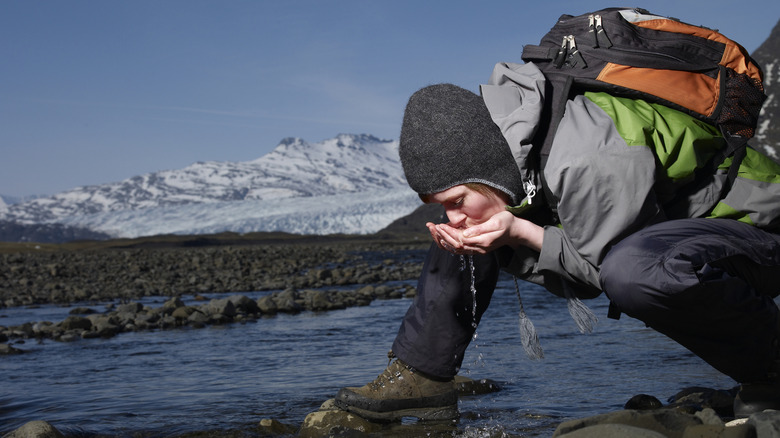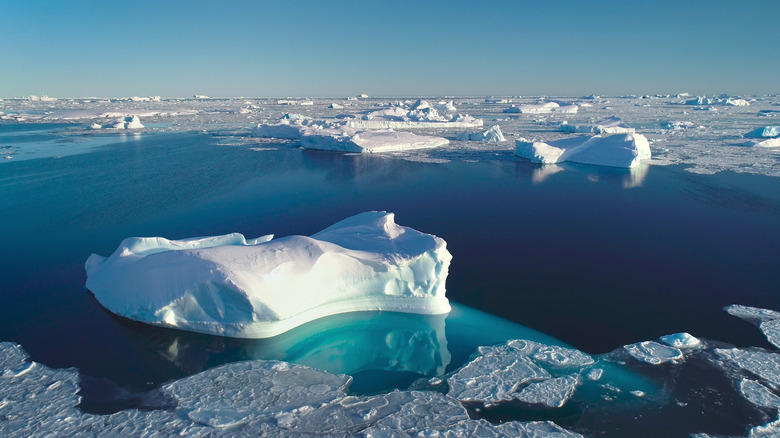Why Tourists Should Avoid Drinking Bottled Water While In Iceland
Besides being one of Europe's safest countries, Iceland's otherworldly landscapes are its main draw. It's impossible not to marvel at its towering waterfalls, volcanic fields, and vast glaciers. But one of Iceland's greatest natural treasures is something far simpler: its water. Unlike many destinations where bottled water is the safer choice, in Iceland, the best thing you can do is drink straight from the tap — or even directly from a glacier-fed stream. In fact, Iceland's drinking water scored 98.5 out of 100 for sanitation, making it among the cleanest in the world (via Environmental Performance Index).
Icelanders got lucky with their unique geology. The water flows naturally from glaciers and is filtered through lava fields, so 98% of water in Iceland is chemically untreated and still pristine. In many countries, tap water might have a slight chlorine or metallic taste, but in Iceland, it's incredibly fresh, often tasting crisper than anything you'll find in a plastic bottle.
It's not uncommon to find future tourists on online forums asking Icelanders where they recommend buying bottled water, only to notice that for many locals it is almost unthinkable to spend money on bottled water. Also, skipping bottled water is a more sustainable option. Iceland is committed to preserving its natural beauty, and reducing plastic waste is an important part of that mission. Plus, a trip to Iceland can be an opportunity to do a microplastic and nanoplastic detox, given that, on average, a liter of bottled water contains thousands of particles, according to a 2024 study published in Proceedings of the National Academy of Sciences.
Drinking Icelandic natural water in the wilderness
If you're planning a vacation to Iceland, you most likely are an outdoorsy person. Iceland's wilderness is its main attraction, and some of its trails are considered the best in Europe. Drinking directly from a glacier-fed stream is the cherry on top of a nature-immersive trip. Just picture yourself pausing a hike to catch your breath and dipping your bottle — or even your hands — into an icy stream and tasting the mineral-rich water. Of course, it's always good to ask your tour guide's opinion whenever you want to collect water in the wild, as some streams and ponds have sheep around, and the water can be infected with urine and feces. Yuck! Stick to fast-flowing streams rather than stagnant pools, and avoid areas where livestock may be present.
However, if you want warm water, keep in mind that opening the hot faucet might release a scent of rotten egg, given that, unlike cold water, it comes from geothermal power plants that contain a smelly gas called hydrogen sulfide. It is still safe to drink, though, just a bit smelly!
So, when in Iceland, do as the locals do — skip the plastic and savor the freshest water you'll ever taste. Bring a reusable water bottle or buy one upon your arrival and fill it up with some of the freshest water on Earth at any faucet you may find.

